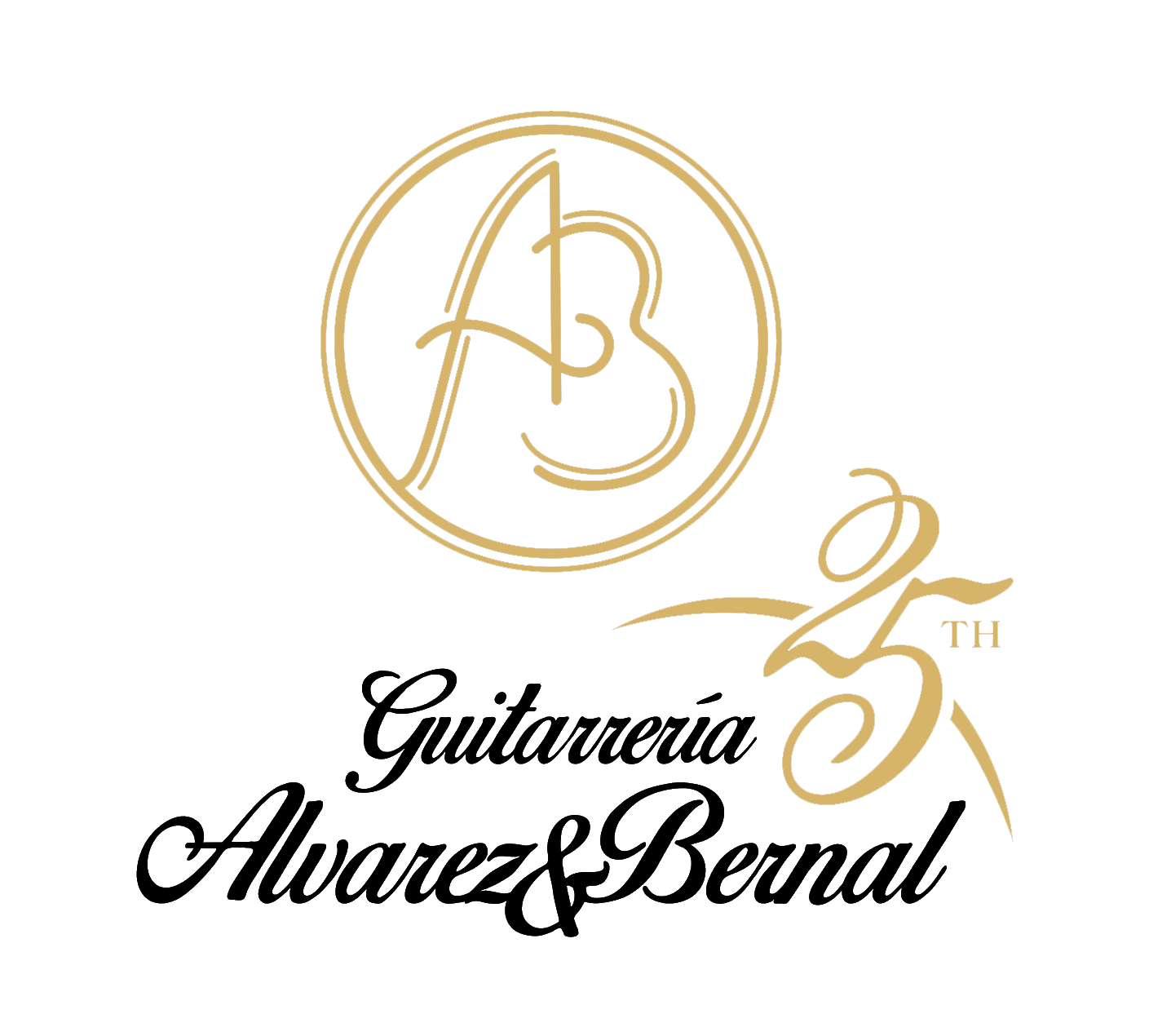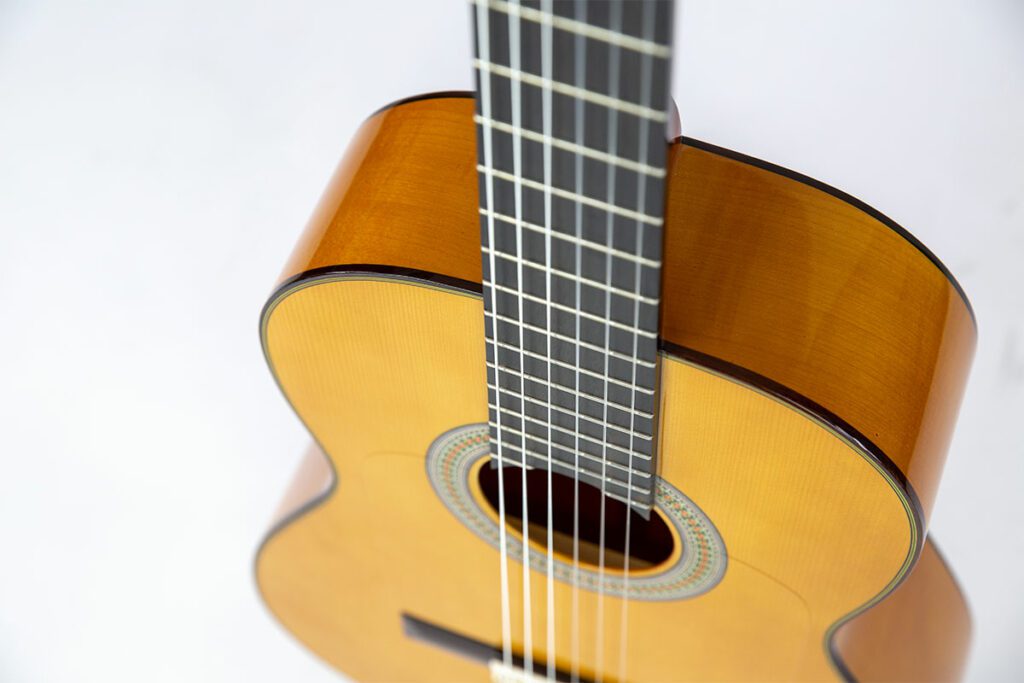Origins of the guitar
The roots of this popular string instrument date back to ancient times. The design and sound of the guitar has been affected by a variety of ancient instruments, such as the Greek zither, Roman crotta, medieval vihuela and Arabic lute, as well as the Moorish guitar.
The inclusion of the guitar in flamenco music marked a turning point in the genre. The evolution of the lute in the Moorish guitar and a series of evolutions with the vihuela combined to form the flamenco guitar. Since then, flamenco guitarists have explored different approaches and techniques, giving rise to a distinctive sound that is easily recognizable.
Manuel Serrapí, also known as Niño Ricardo, is remembered as one of the most influential figures in the evolution of flamenco guitar. His ingenious playing style and technical skill allowed the instrument to reach new heights in the world of flamenco. He stood out for his creativity and expression.
Agustín Castellón Campos “Sabicas” was an admired guitarist of the 20th century, who stood out for his amazing technique and cleanliness. He was the most prolific flamenco guitarist to date with numerous recordings and lived in New York for much of his life, where he opened many doors to flamenco in general.
Ramon Montoya. Frequently nicknamed the “father” of flamenco guitar. He was the first solo guitarist in the history of flamenco guitar and the first to make recordings as such. Among his creations is the concert guitar rondeña, with a different tuning: the sixth string in D and the third in F sharp.
Silverio Franconetti is also a key figure in the history of flamenco music, as he was responsible for popularizing the genre in the 19th century. His contributions to the growth of the genre have been enduring, and he is still remembered today as one of the best flamenco singers of all time. His faithful squire and companion was the flamenco guitarist “Maestro Patiño”.
Primitive flamenco without guitar
The flamenco guitar was originally the popular guitar of barbers, which acted as an accompaniment to popular songs and dances in patios and neighborhood gatherings. Although also in the barbershops themselves.
Cante jondo (without accompaniment) was an older form of performance in flamenco, and only the singer participated in it. These cantaores used their voices to evoke emotions related to love, loss and tragedy, often accompanied by percussive elements such as clapping and tap dance. As flamenco evolved, other instruments such as castanets, tambourines, and lutes were occasionally used.
The guitar, over the years, became a solo instrument (starting with Ramón Montoya). The guitar brought more complexity to the singing and dancing performances, creating a more elaborate soundscape and increasing the technical and harmonic level.
However, there are still some traditional forms of flamenco that do not include the guitar. The cante a palo seca is a song without musical accompaniment, and the baile de cante is a dance performed to the song without musical accompaniment. These forms of flamenco emphasize the importance of the singer and the power of the human voice.
Manuel Serrapí (Child Ricardo)
Manuel Serrapí, better known as Niño Ricardo, was a renowned Spanish guitarist who made immense contributions to the narrative of the genre. Born in Seville in 1904, he began strumming at the age of six and soon became passionate about music. He became one of the most sought-after performers in the country, performing in numerous tablaos and theaters. His skillful style and unique techniques set him apart from other musicians of his time and earned him the nickname King of the Flamenco Guitar.
In addition to his career in show business, Niño Ricardo was also a respected teacher of this instrument. He taught many young Seville guitarists, such as Paco de Lucía and Manolo Sanlúcar, who would become icons in their own right. His teaching method was based on a deep knowledge of the rhythms and forms of flamenco, as well as his dedication to safeguarding traditional styles while introducing new ideas and techniques.
Furthermore, Niño Ricardo was a prolific composer of flamenco music. He composed many timeless pieces that are still performed and studied today, such as El Cristo de los Faroles, Sevillanas del Siglo XVIII and La Caña. His compositions attest to his deep knowledge of the genre’s heritage and customs, as well as his inventive approach to the instrument.
Silverio Franconetti
The name of Silverio Franconetti is forever linked to the evolution of flamenco music. He was born in Seville in 1831 and became a talented singer, famous for his emotional intensity and ardor. He was the initiator of the idea of the café canto, a place where flamenco artists were paid to perform, which helped spread the art. He also played a key role in perfecting the design and sound of the flamenco guitar.
Despite his immense contribution, Franconetti was criticized for commercializing the art and for not staying true to previous flamenco styles. However, his influence on flamenco music is undeniable. Contemporary artists are often inspired by his work, and the café canto remains popular. Silverio Franconetti will always be remembered as a revolutionary and innovator in the world of flamenco music.
Development and evolution of the flamenco guitar technique
The trajectory of the flamenco guitar is interesting and has attracted the attention of many music lovers. Over time, musicians have perfected complex techniques such as strumming. This technique consists of strumming the strings with the fingers of the right hand and offers a unique timbre that is fundamental to flamenco. Picado, which consists of plucking with the fingertips, and almapúa, which consists of playing the low strings with the thumb, are other techniques that have been developed over the years. The result is a multifaceted range of sounds and styles.
As time went by, flamenco guitarists began to experiment with new techniques, starting from those of the classical guitar and making them their own, with their variants.
Currently it is very common for different guitarists (especially soloists) to be influenced by music such as jazz or bossa nova to enrich their music with scales and harmonies.
With the globalization of our world, flamenco guitar has become a global phenomenon that captivates listeners around the world. Whether you are a musician or simply an admirer of music, the evolution of flamenco guitar technique is an intriguing topic to explore. In conclusion, the flamenco guitar has a rich and diverse history that spans centuries and cultures. Flamenco guitar has become an integral part of this passionate and emotional musical genre. The contributions of influential figures such as Manuel Serrapí (Niño Ricardo), Sabicas, Ramón Montoya and later Paco de Lucía, Manolo Sanlúcar, Serranito, Vicente Amigo, Gerardo Núñez, Cañizares… have helped shape the evolution of guitar technique flamenco As we continue to explore and appreciate the art of flamenco, we can appreciate the unique and intricate beauty of this iconic instrument.




